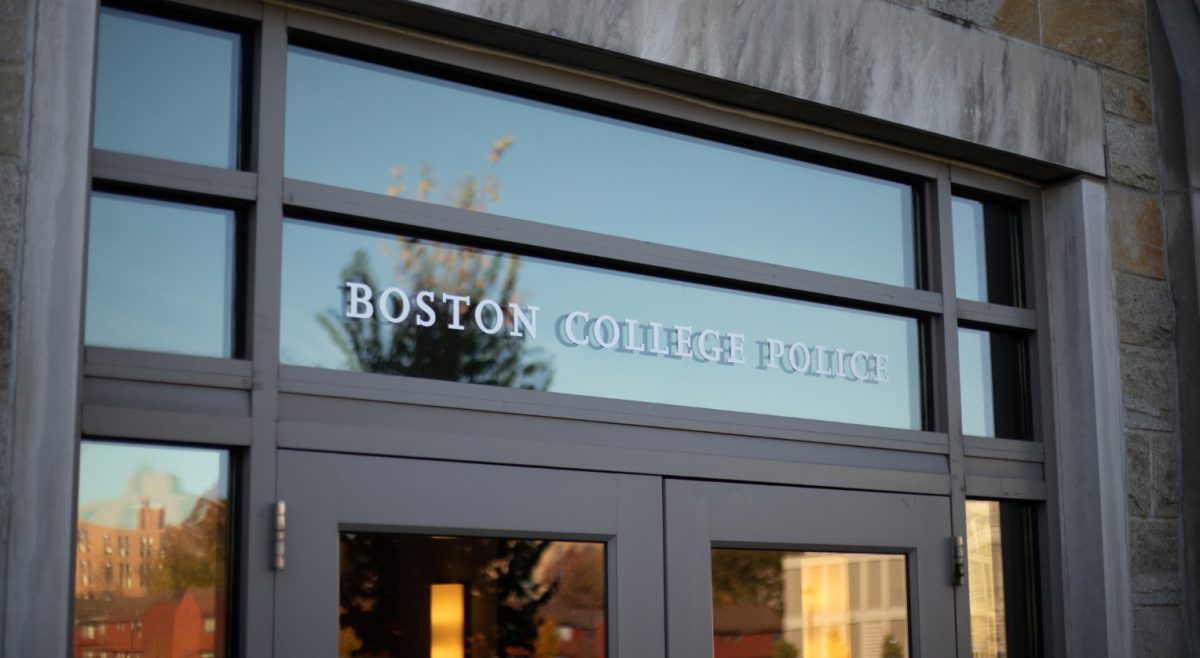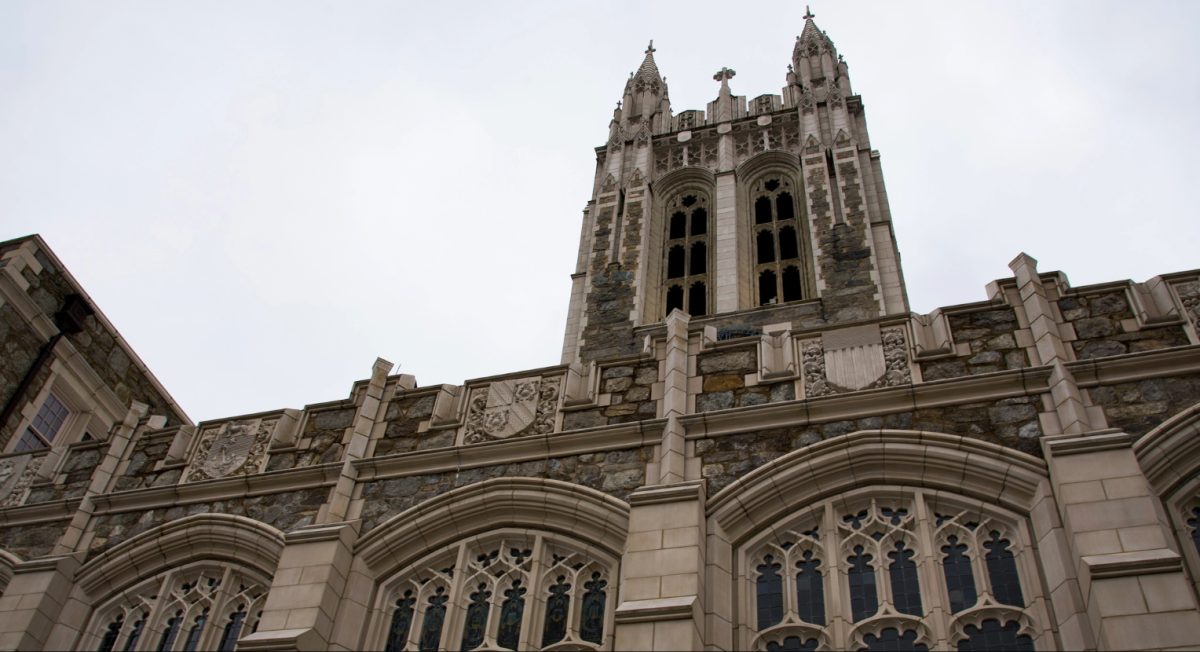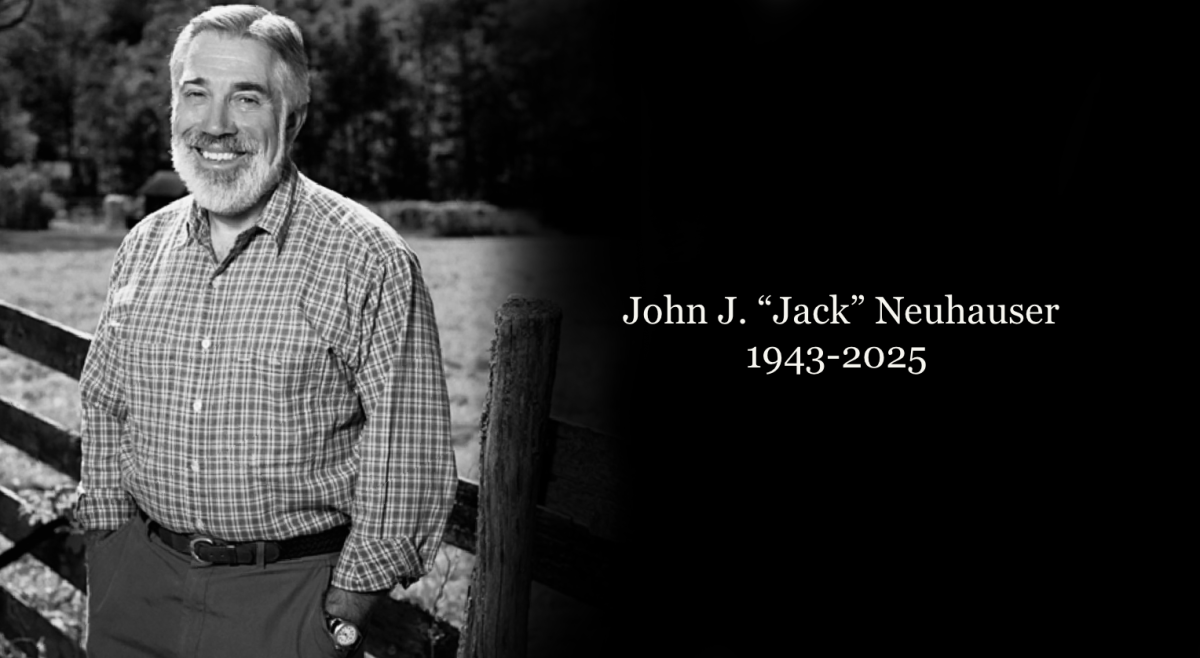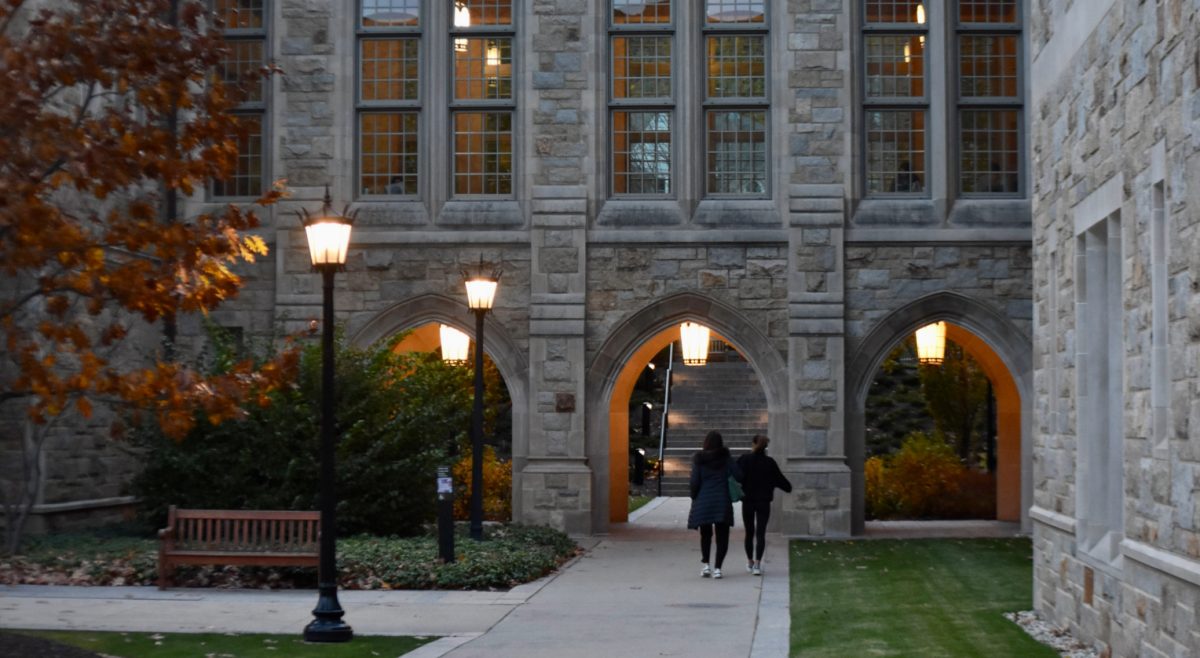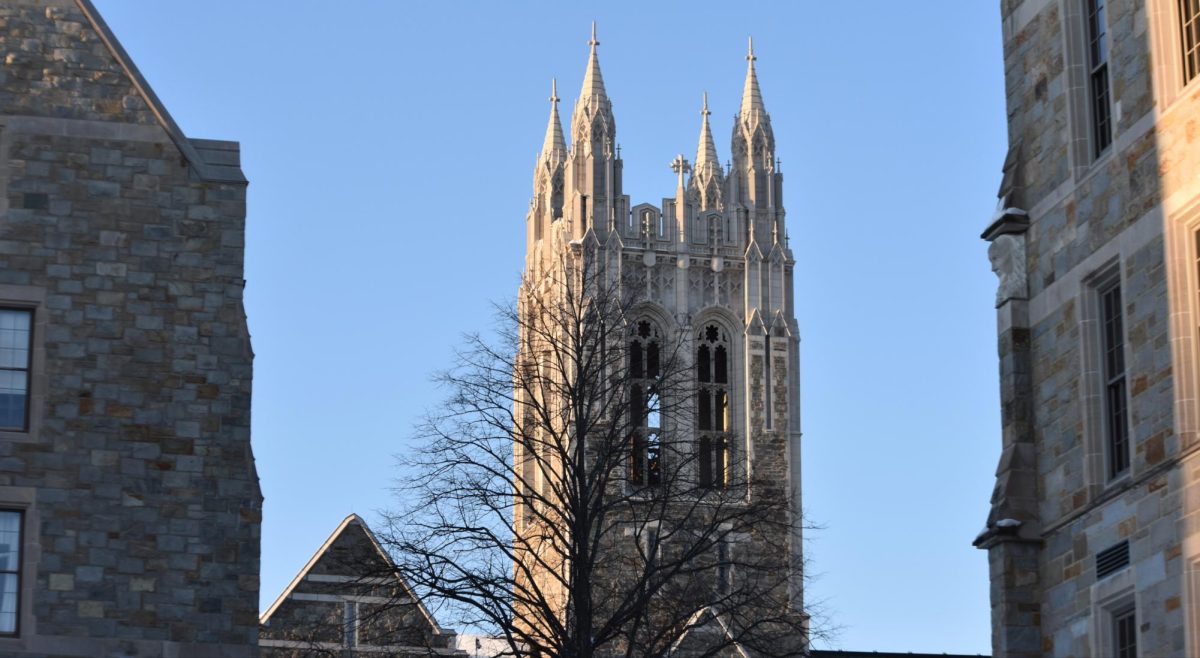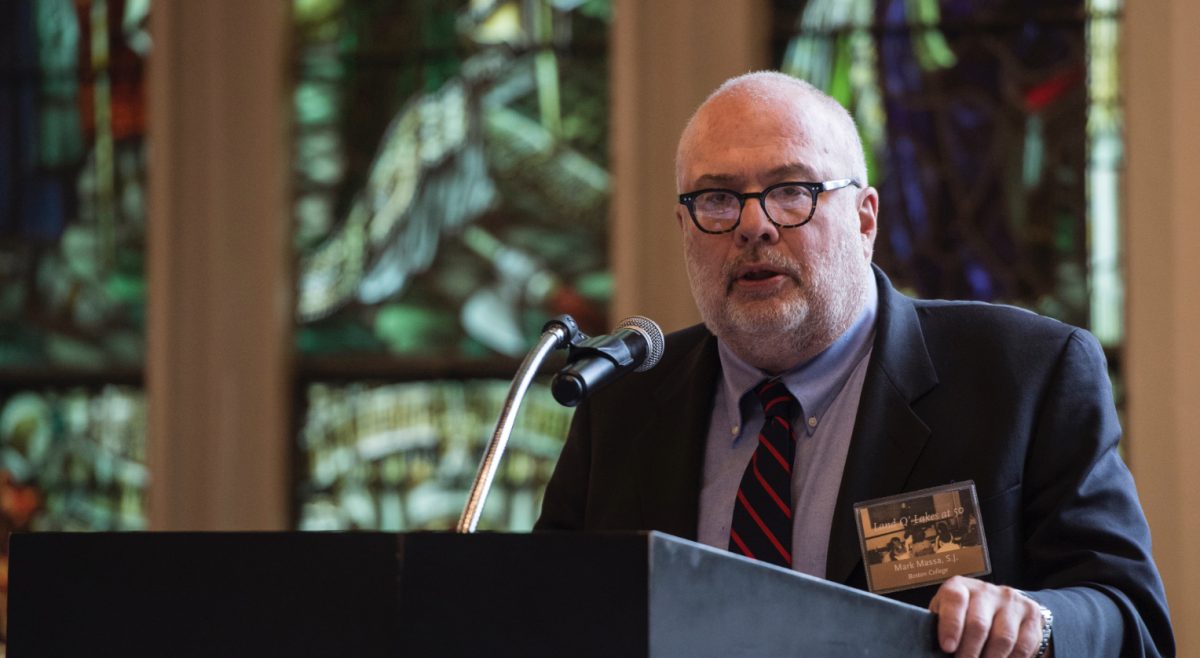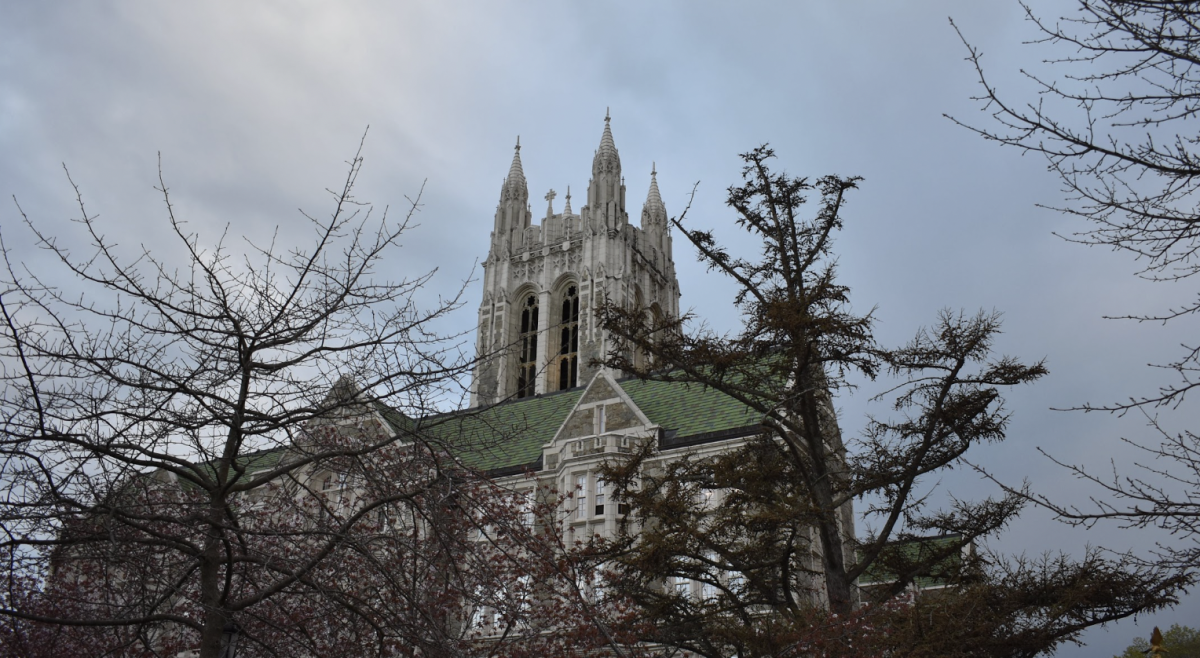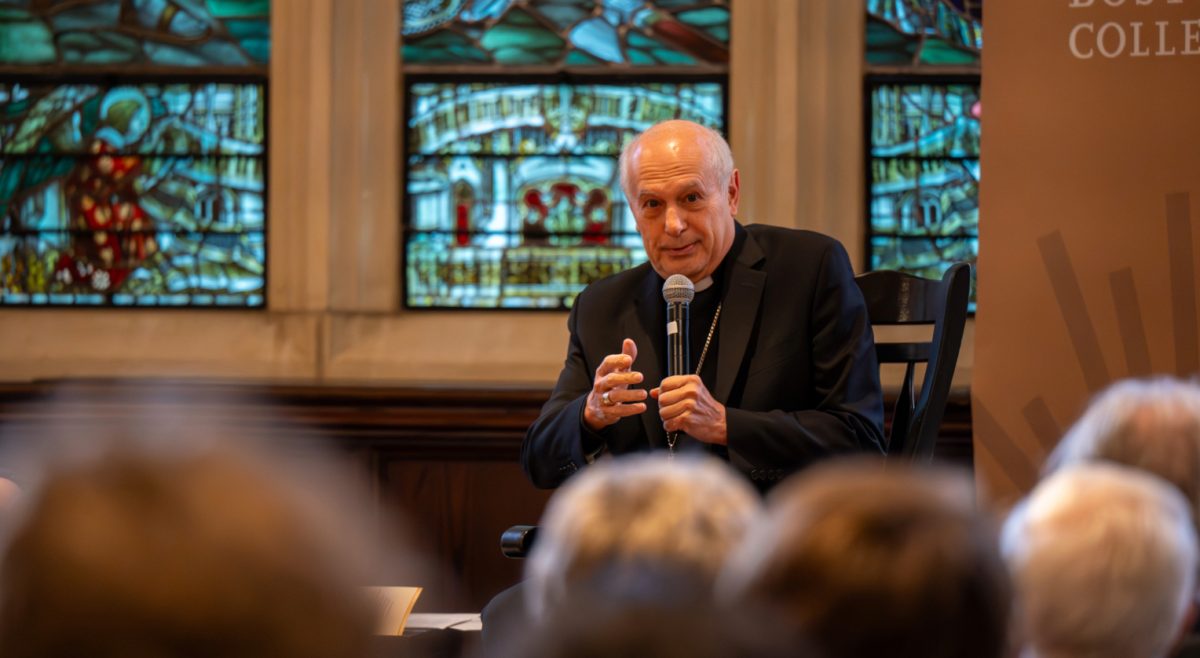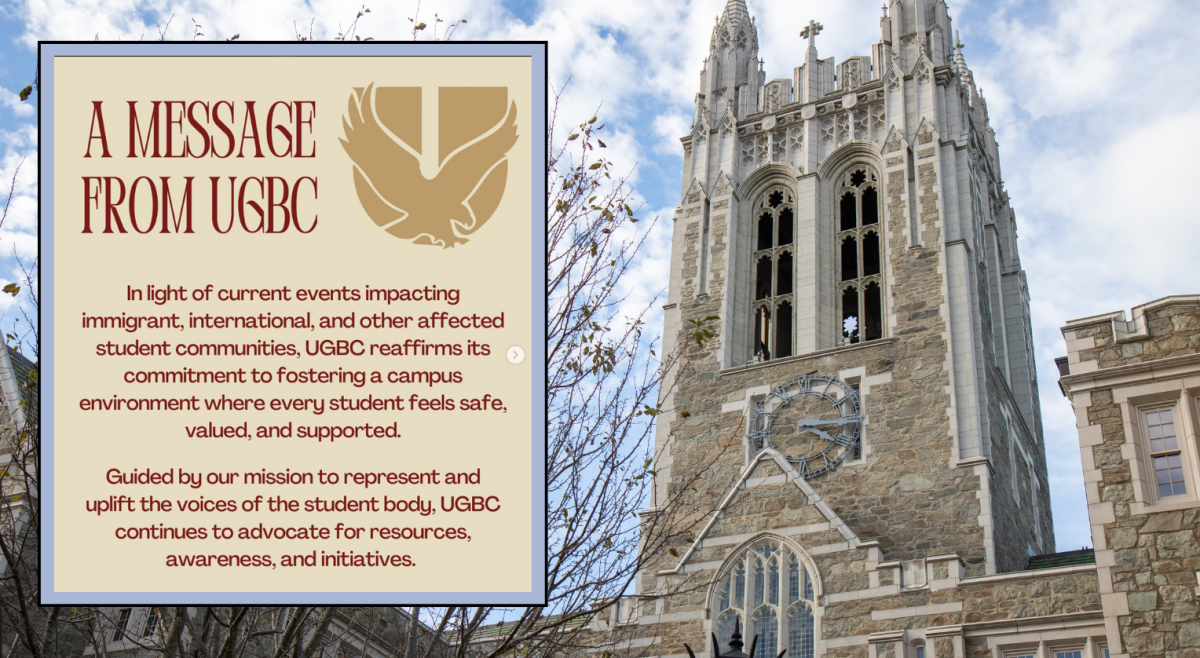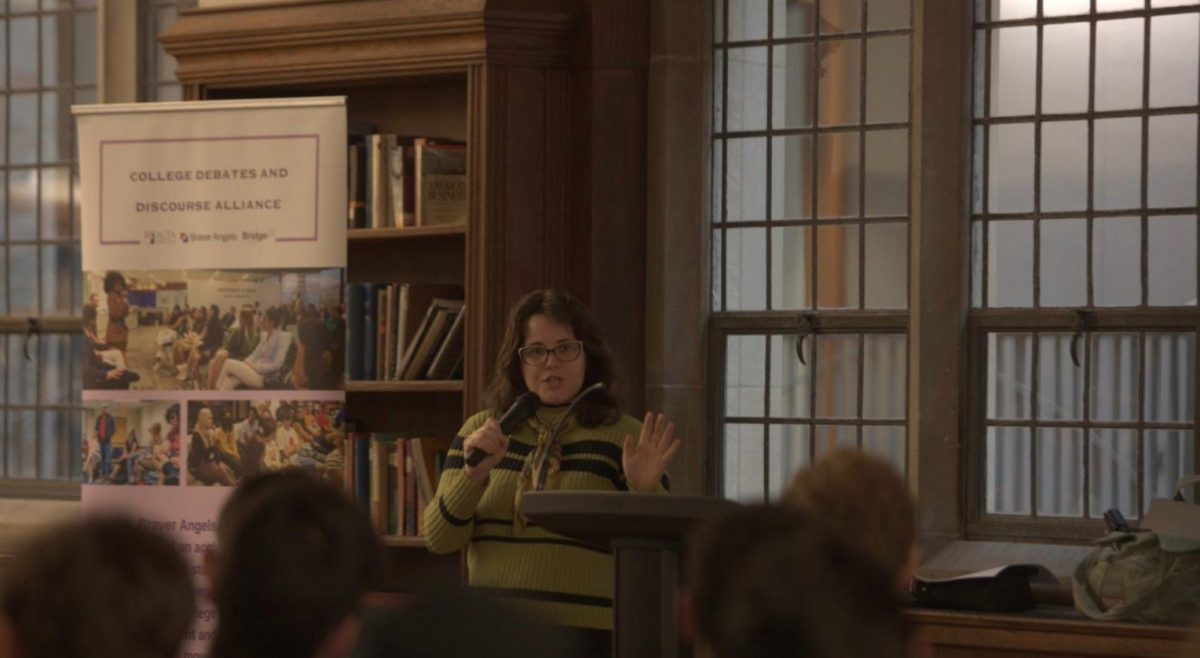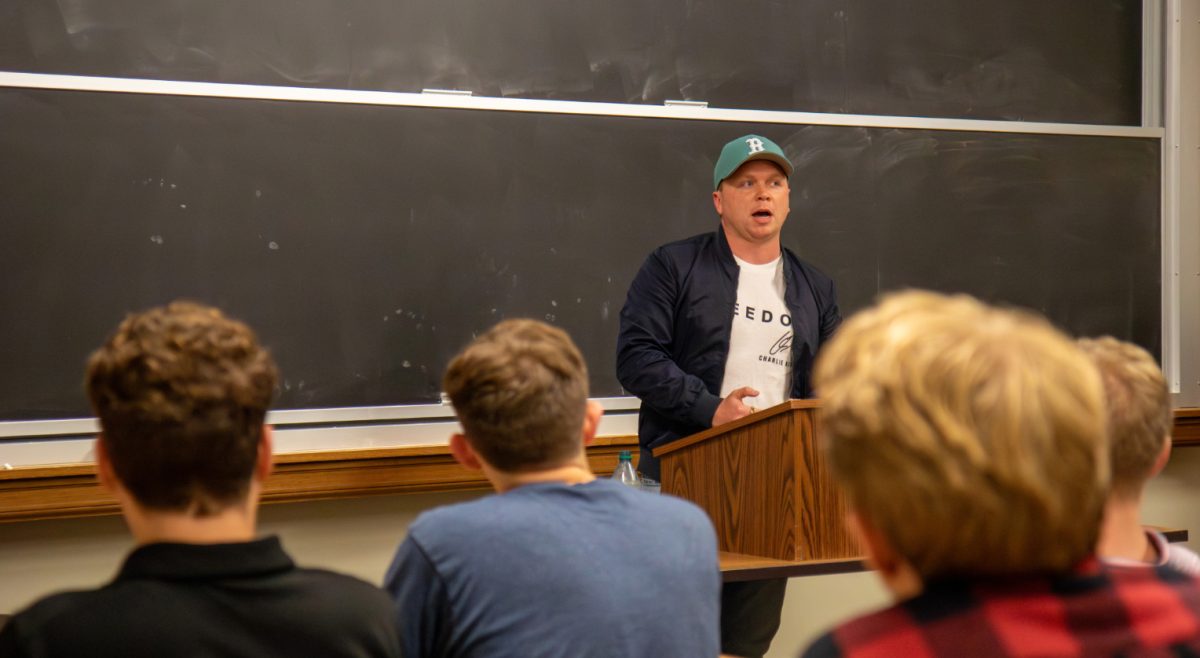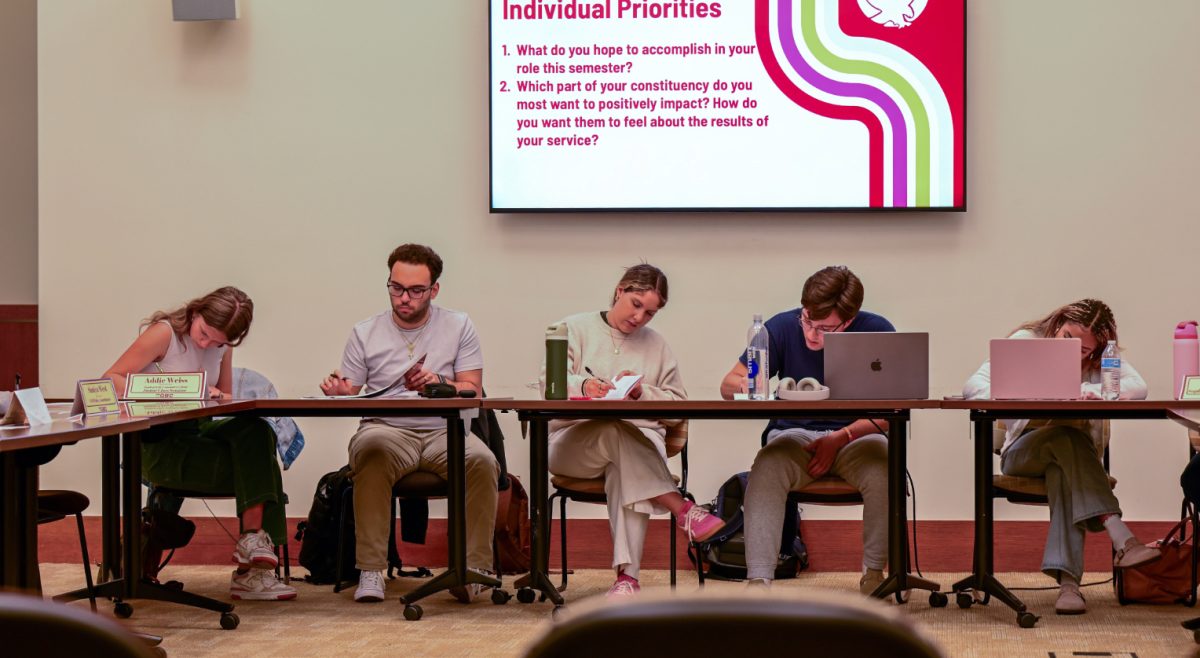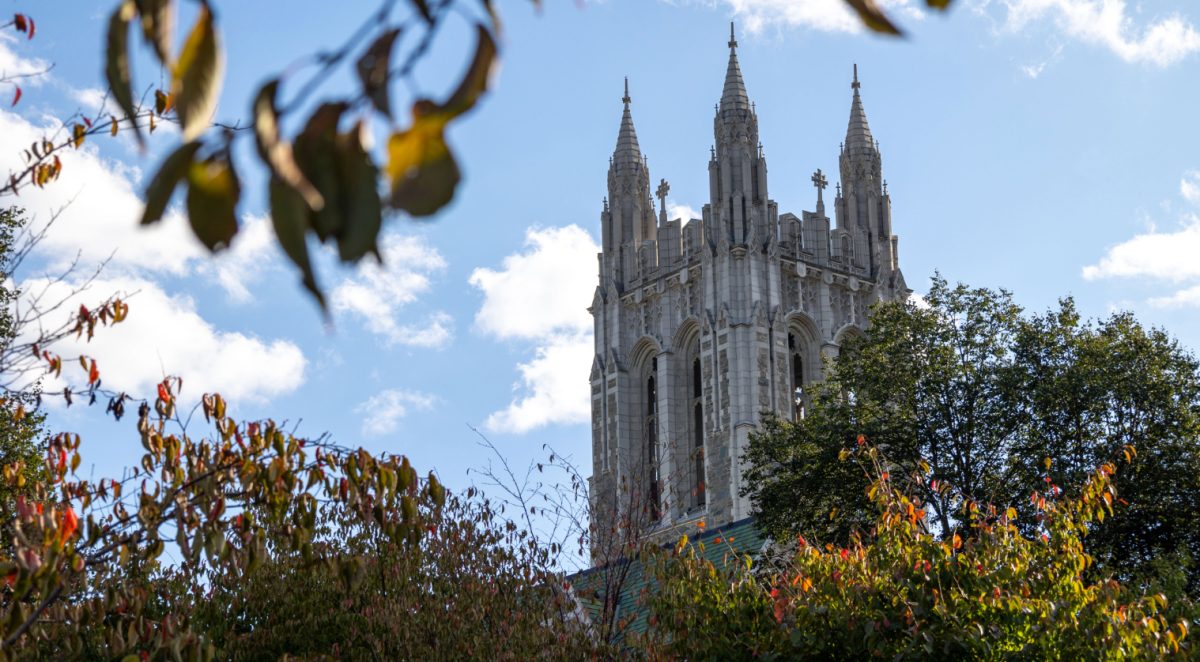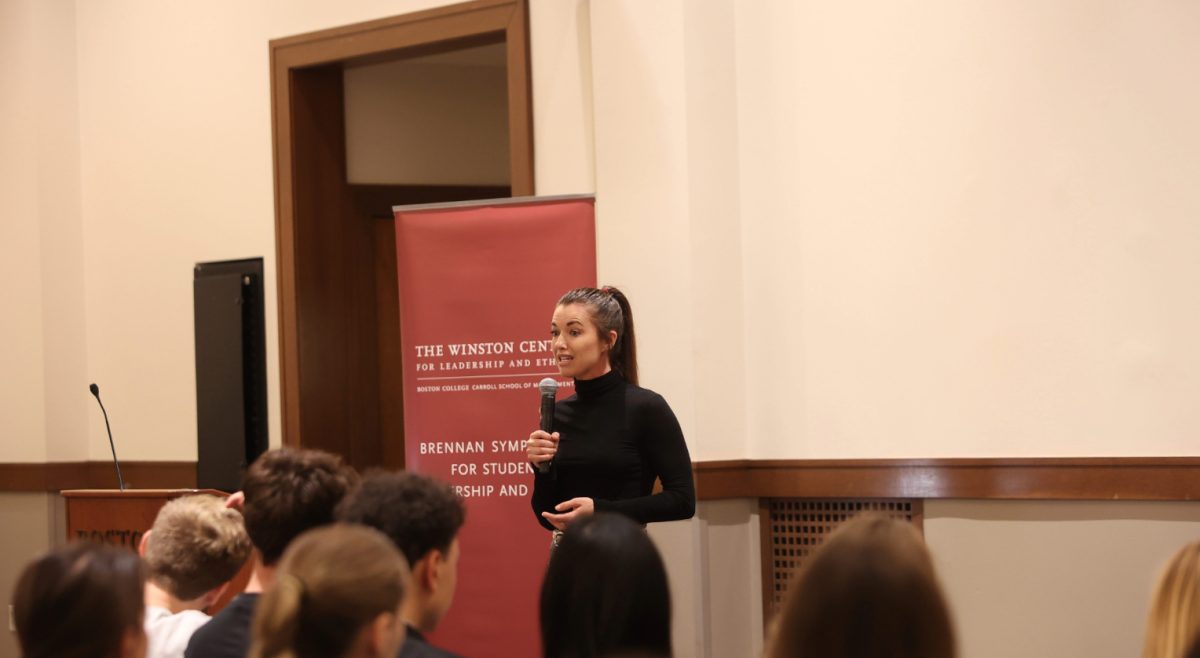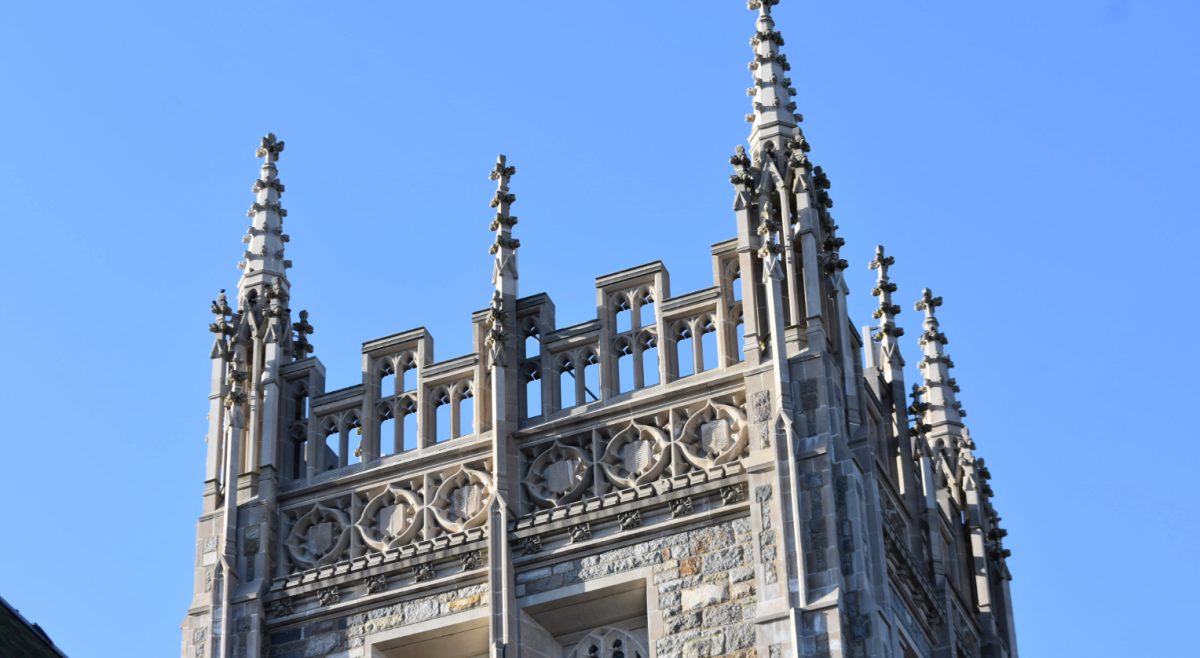Vice Provost for Enrollment Management John Mahoney, BC ’79, discussed the current landscape of cost and financial aid in higher education—which he described as “pretty terrifying”—at the fourth student-administrator forum of the academic year on Tuesday. The forum was hosted by interim Vice President of Student Affairs Joy Moore and the Undergraduate Government of Boston College.
While family incomes in the United States have not grown in any category since about the year 2000, about 6.5 percent of American households fit BC’s “full-pay profile,” meaning they can pay the full cost of attendance, Mahoney said. These households have an adjusted gross income of at least $200,000.
“Between now and 10 years from now, that percentage of full-pay families will move to 7.5 percent—in other words, not much,” Mahoney said. “Eight years from this year, academic year ’26-27, will be the year that Boston College’s total cost for tuition, room, and board exceeds $100,000 a year.”
Mahoney, who has worked at BC for 35 years—including serving as the director and then dean of undergraduate admission and financial aid—said that the things that makes him proudest about BC are that the admissions process is “need-blind” and that the University meets the full demonstrated need calculated by the University of every student it admits. Being need-blind means that a family’s ability to pay tuition and fees has no bearing on the admissions decision for an applicant.
The factors of rising tuition and stagnant income mean that it is not a guarantee that BC can remain need-blind and meet full demonstrated need “by any stretch of the imagination,” Mahoney said. He explained that families who are currently classified as “no-need” in the admissions process are going to started requiring need-based aid, and families that are currently classified as “low” and “medium” need are going to move into the high-need category.
There are a total of 20 private universities and 18 private liberal arts schools that fit this category of being need-blind and meeting full demonstrated need, according to Mahoney. While there used to be 19 private liberal arts colleges in this category, the number dropped to 18 when the College of the Holy Cross was not able to be need-blind this past admissions cycle.
“Those are lofty principles to live up to—[they’re] very expensive [principles] to live up to,” he said in reference to the University’s commitment to being need-blind and meeting full demonstrated need.
It’s going to cost BC a lot of money for the University to maintain its need-blind and full-need policies, Mahoney said, which is why he has been working with the Board of Regents Financial Aid Committee in the hopes of getting them to join him and the Office of University Advancement in leading a major component of BC’s capital campaign.
“You can only do need-blind admission and meet full need if you’ve got an endowment the size of BC’s, and as I said, BC’s is sort of rock bottom in the national universities category,” Mahoney said.
BC funds some of its financial aid out of the endowment, Mahoney said, but most of the funds come from tuition revenues that have been rolled back into the operating budget. This year, the University is spending $131 million—more than 10 percent of BC’s operating budget—on need-based grants to students, which does not include loans, work-study, athletic scholarships, or the Gabelli Presidential Scholars Program.
Mahoney said that, in his new role, he is trying to ensure that qualified and deserving students from all kinds of economic backgrounds are going to be able to come to BC. Mahoney said he believes that in order for BC to remain the institution that it is, it has to continue to be need-blind and meet full demonstrated need.
Maintaining these two principles is going to depend on motivating the donor base to understand that these two aspects of admission are crucial to BC’s survival. He said that he, University President Rev. William P. Leahy, S.J., and most of the members of the Board of Trustees are committed to keeping BC need-blind and meeting full demonstrated need.
“To have to abandon that at this point, it would be difficult, and it would it would change this place,” he said. “I would hope that that change doesn’t come.”
One student asked Mahoney about the factors that are considered in deciding to raise tuition every year. Mahoney explained that while most businesses try to function in a way that maximizes efficiency and profitability, this kind of model doesn’t work in higher education.
“The more efficient you become, the less valuable the product becomes,” Mahoney said. “We could, say, cut the faculty and raise the student-faculty ratio to 18:1 from 12:1. We could raise the average class size from 27 to 51. There’d be a diminution in quality of the experience, right?”
BC also has to maintain its infrastructure, said Mahoney. He pointed out that the University is trying to respond to the times with the new Schiller Institute for Integrated Science and Society and that the construction of the Fish Field House was a necessity on account of BC’s choice to be in the Atlantic Coast Conference.
“The budgets aren’t set arbitrarily,” Mahoney said. “There are some very wise financial minds down there that pinch every single penny. … [There’s] not a lot of loose spending around this place.”
One student asked Mahoney if he pictures the number of merit scholarships BC offers ever changing. BC currently only offers one merit-based scholarship, the Gabelli Presidential Scholarship, to 15 qualified students each year—which is a specifically endowed program founded by the Wall Street Council and funded primarily by Mario Gabelli.
“I don’t think there’s a great appetite at BC right now for more merit-based scholarships, because if we’re going to be able to meet need, that’s really got to be the priority,” he said. “Right now, the majority of the people at the upper level, on the Board of Trustees, I think they get it, and I think they’re as frightened as I am about what the next 10 years holds for all of higher education, but BC in particular.”
Another student asked Mahoney to talk about the recent college admissions scandal. Mahoney said that while he thinks the scandal is misnamed—it’s really a “college athletics scandal,” he said—the situation was a byproduct of what the college admissions process has become.
Mahoney pointed out how electronic applications have led to increased numbers of college applicants, and college ranking systems have paved the way for increased marketing and a race for selectivity among colleges. Today, Mahoney said, there are a small number of elite institutions that the rich and famous want to attend, which gave rise to an industry of independent counselors who help high school students with their schoolwork and exam preparation.
“It was sort of inevitable that these agencies would become scurrilous in some way,” Mahoney said. “And what they figured out was a neat little side door to getting into some of these schools—and it’s sports.”
Mahoney said that admissions counselors are vulnerable to coaches who may be taking bribes to flag students as athletes during the admissions process.
“Nobody on the admissions staff sits across from the tennis coach and says, ‘You know, I don’t think the speed of her serve is all that great,’” Mahoney said. “We’re looking at grades and scores and are they going to be a strong student at Boston College.”
A couple of days after the scandal broke, one of the associate athletic directors pulled all of the BC coaches together and said, “If you’ve got something to tell me, you better tell me now,” according to Mahoney—and nobody had anything to tell him.
Mahoney said that he’s run lists of every current BC student who came in flagged as an athlete and that almost every one of them is still on the roster, and those who have dropped off have done so for good reasons.
“There’s nothing here,” Mahoney said.
Correction (4/29/19, 11:25 a.m.): The College of the Holy Cross was initially described, incorrectly, as no longer meeting full need, rather than becoming need-aware in admissions.
Featured Image by Abby Hunt / Heights Editor


